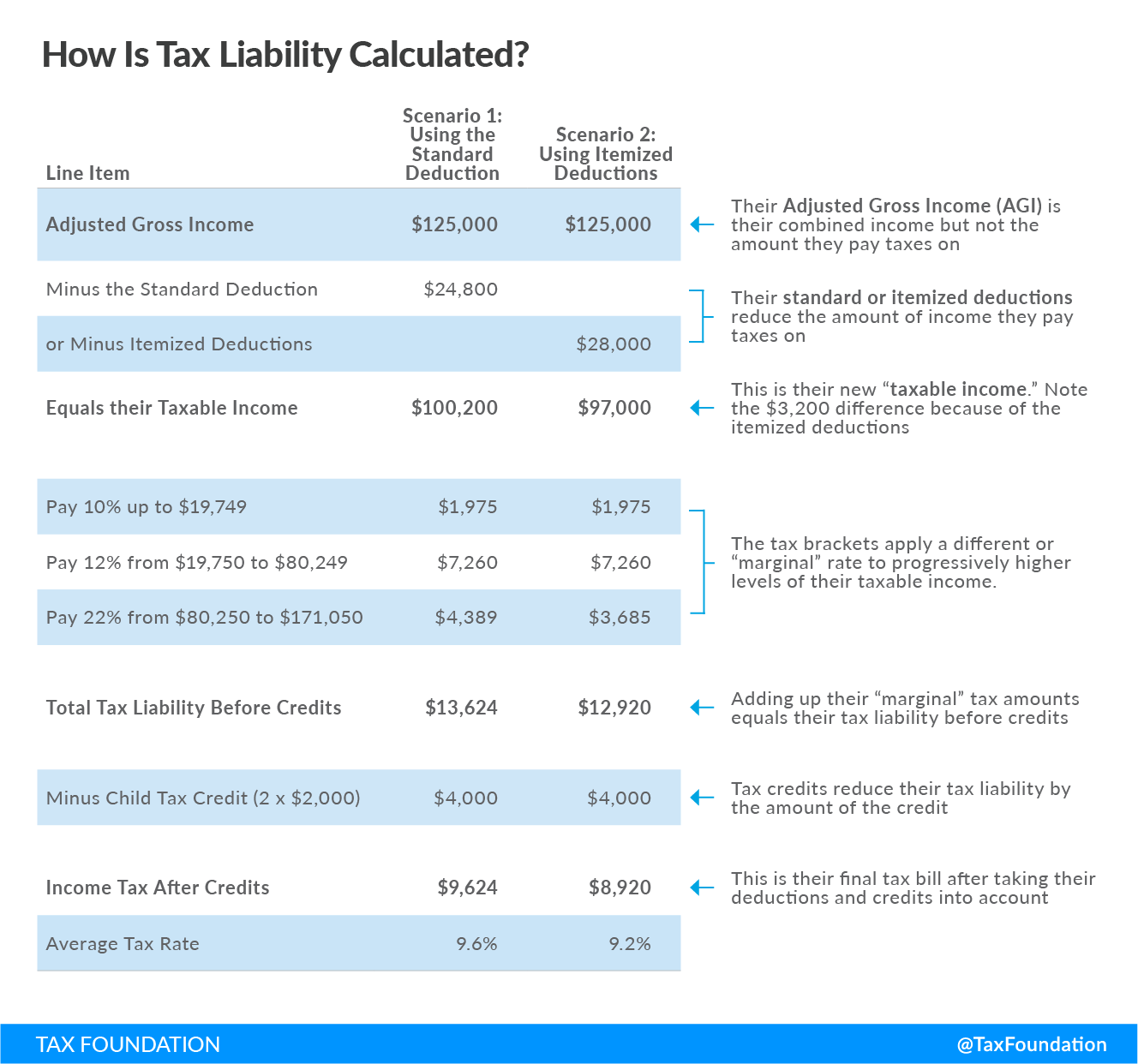The standard deduction reduces a taxpayer’s taxable income by a set amount determined by the government. It was nearly doubled for all classes of filers by the 2017 Tax Cuts and Jobs Act (TCJA) as an incentive for taxpayers not to itemize deductions when filing their federal income taxes.
How Does It Work? How Much Is It Worth?
The larger the standard deduction, the less income is subject to taxation. The Tax Cuts and Jobs Act (TCJA) increased the standard deduction to $12,000 for single filers (up from $6,500 pre-TCJA), $24,000 for joint filers (up from $13,000 pre-TCJA), and $18,000 (up from $9,550) for heads of household.
According to a recent study, 63 percent of taxpayers with incomes between $100,000 and $200,000 itemized in 2017, and only an estimated 25 percent in 2018 post-TCJA. Prior to the TCJA, taxpayers could claim both the standard deduction and a personal exemption. To streamline the code and reduce complexity, the TCJA eliminated the personal exemption but nearly doubled the standard deduction for all filing types. After the TCJA was enacted, the same study found that the majority of taxpayers with incomes below $200,000 no longer itemized.
What Is the Difference Between Taking the Standard Deduction Versus Itemizing Deductions?
The standard deduction is a fixed amount for all taxpayers depending on their filing status. Conversely, itemized deductions are various expenses which may be listed to reduce taxable income for taxpayers who, for example, make charitable contributions, pay state and local taxes, or deduct the interest payments on their mortgage. Itemized deductions are more uniquely tailored and favored by taxpayers in higher-income brackets.
Taxpayers tend to choose the deduction option that lowers their taxable income the most and maximizes what they keep. The TCJA increased the standard deduction, eliminated the personal exemption, and reduced eligible expenses and amounts of itemized deductions, to encourage more taxpayers to opt for the less complex route of claiming the standard deduction. This deduction is administratively easier for the taxpayer to elect and for the IRS to compute and benefits most taxpayers in the lower income brackets more than itemizing.
Stay updated on the latest educational resources.
Level-up your tax knowledge with free educational resources—primers, glossary terms, videos, and more—delivered monthly.
Subscribe

